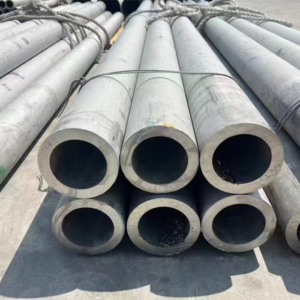Get in touch with us
Leave a message
Explore our extensive range of stainless steel pipes, offering austenitic, ferritic, and duplex grades to suit various industrial needs. With options for high-strength durability or enhanced corrosion resistance, we provide diverse finishes and compositions tailored to your demands. Our knowledge spans multiple stainless steel varieties, delivering top performance and cost efficiency at every price level. From standard sizes to fully customized designs, our dedicated team ensures solutions supported by industry-leading expertise.

Stainless steel pipes, prized for corrosion resistance and strength, adhere to standards like ASTM A312, A269, A790, ASME B36.19M, ISO 1127, and DIN EN 10217-7, covering seamless, welded, and duplex types. Available in grades like 304/316 (austenitic), 430 (ferritic), and S32205 (duplex), they range from 1/8” to 30” NPS, with wall thicknesses (Schedules 5S-80S, 0.3-50 mm) and lengths up to 12 meters. Classified by process (seamless/welded), material (austenitic/ferritic/duplex), and use (general, high-temperature, sanitary), they undergo rigorous testing to ensure quality for industries like oil, chemical, and food processing.
Stainless Steel Pipes come in a wide range of sizes to suit diverse needs. Common dimensions include:
This flexibility ensures Stainless Steel Pipes fit everything from small hydraulic systems to large industrial builds.
Stainless Steel Pipes come in various types, forms, and finishes, each tied to specific manufacturing processes:
This flexibility ensures Stainless Steel Pipes fit everything from precision instrumentation to heavy industrial systems.
| Model | Features | Applications |
|---|---|---|
| 304 Stainless Steel Pipe | Good corrosion resistance, Weldable, Formable | Food processing, Architecture |
| 316 Stainless Steel Tube | Superior corrosion resistance, Mo-enhanced | Marine, Medical devices |
| 430 Stainless Steel Pipe | Mild corrosion resistance, Magnetic, Cost-effective | Automotive trim, Appliances |
| 321 Stainless Steel Tube | High-temp strength, Corrosion-resistant | Aerospace, Exhaust systems |
A:A stainless steel pipe is a hollow tube made from corrosion-resistant alloys like 304 or 316, used for transporting liquids, gases, or solids in industries such as construction, food processing, and chemical manufacturing.
A:304 stainless steel pipe offers good corrosion resistance for general use, while 316, with added molybdenum, excels in marine or chloride-rich environments due to superior pitting resistance.
A:Stainless steel pipes are used in plumbing for water systems, food industries for hygienic transport, marine for seawater lines, and chemical plants for corrosive fluid handling due to their durability.
A:Stainless steel pipe is often less strong than carbon steel pipe in terms of raw strength (e.g., 500-700 MPa vs. 800 MPa), but its corrosion resistance and longevity make it preferable in harsh conditions.
A:Stainless steel pipes resist rust due to chromium forming a protective oxide layer, but 304 may rust in saltwater, while 316 performs better. Proper maintenance prevents rust in extreme environments.
A:Stainless steel pipes can last 20-50 years, depending on the grade and environment. In mild conditions, 304 lasts 20-30 years, while 316 can endure 40-50 years in marine or chemical settings with care.

Professional manufacturer of premium specialty alloys, offering stainless steel, Hastelloy, nickel-based alloys and processing services. Delivering superior metallurgical solutions for aerospace, petrochemical, marine engineering and other demanding industries.
©2025 alloy-materials.com COPYRIGHT ALL RIGHT RESERVED.